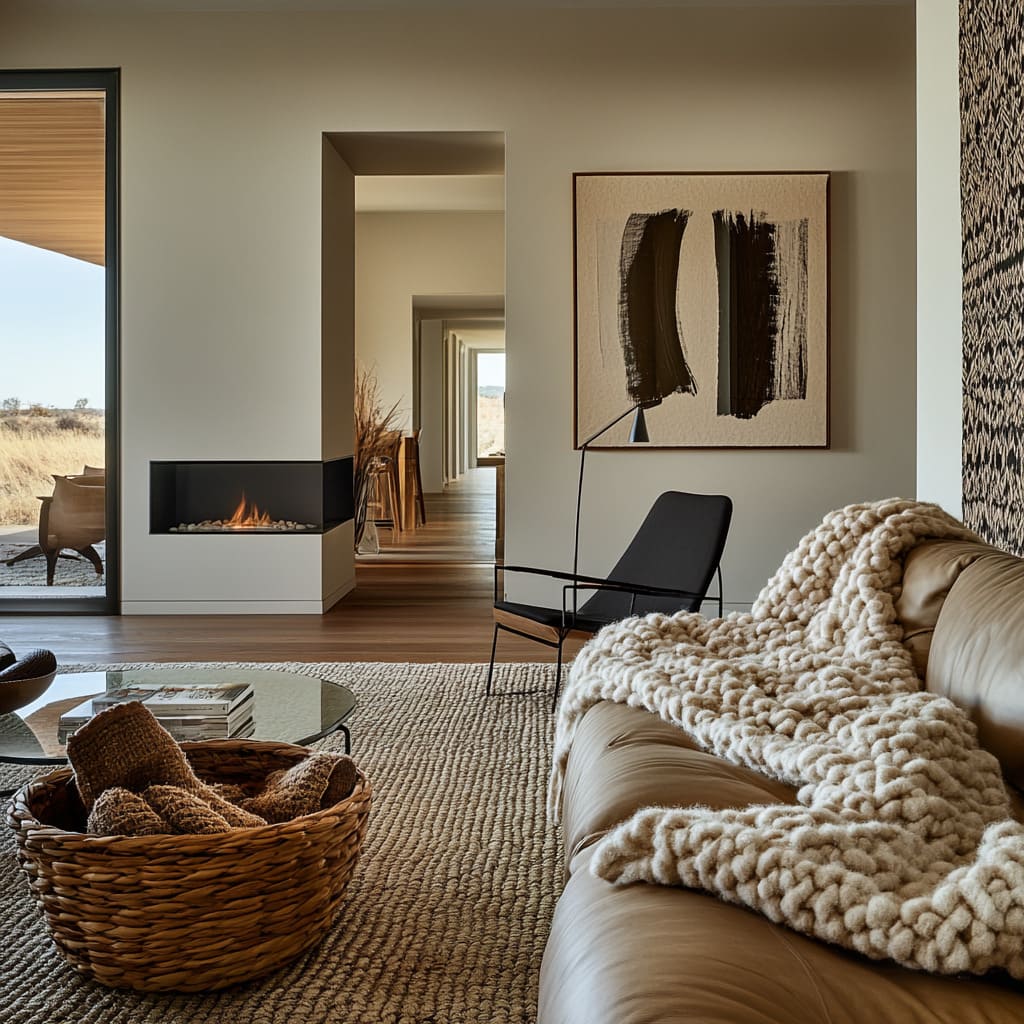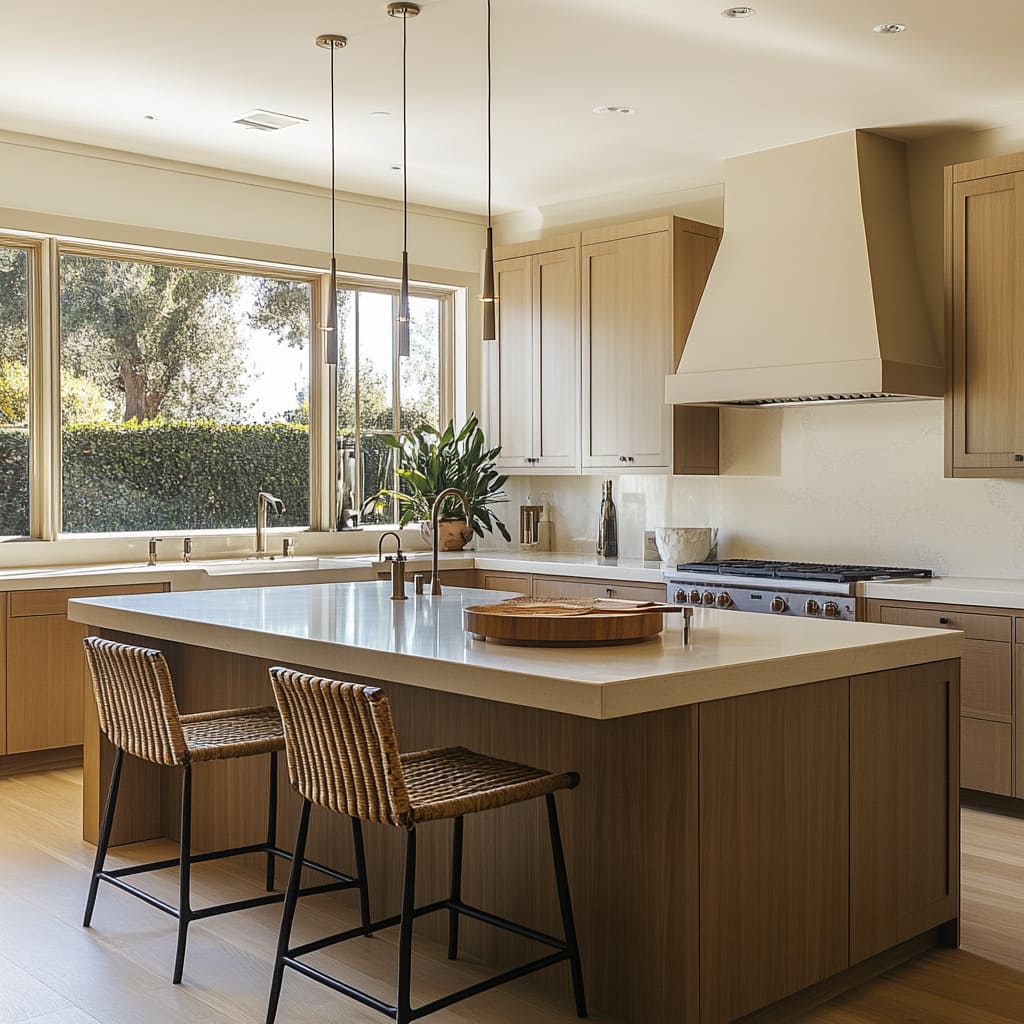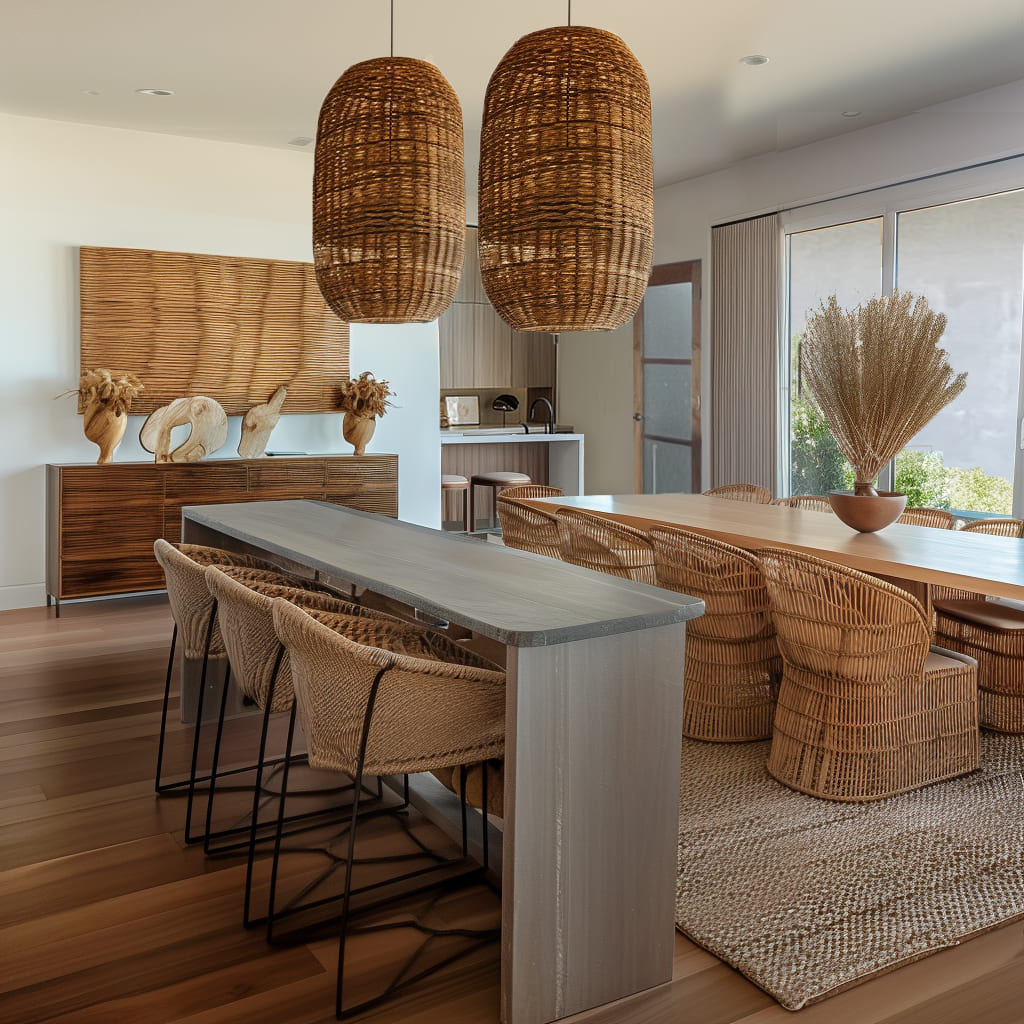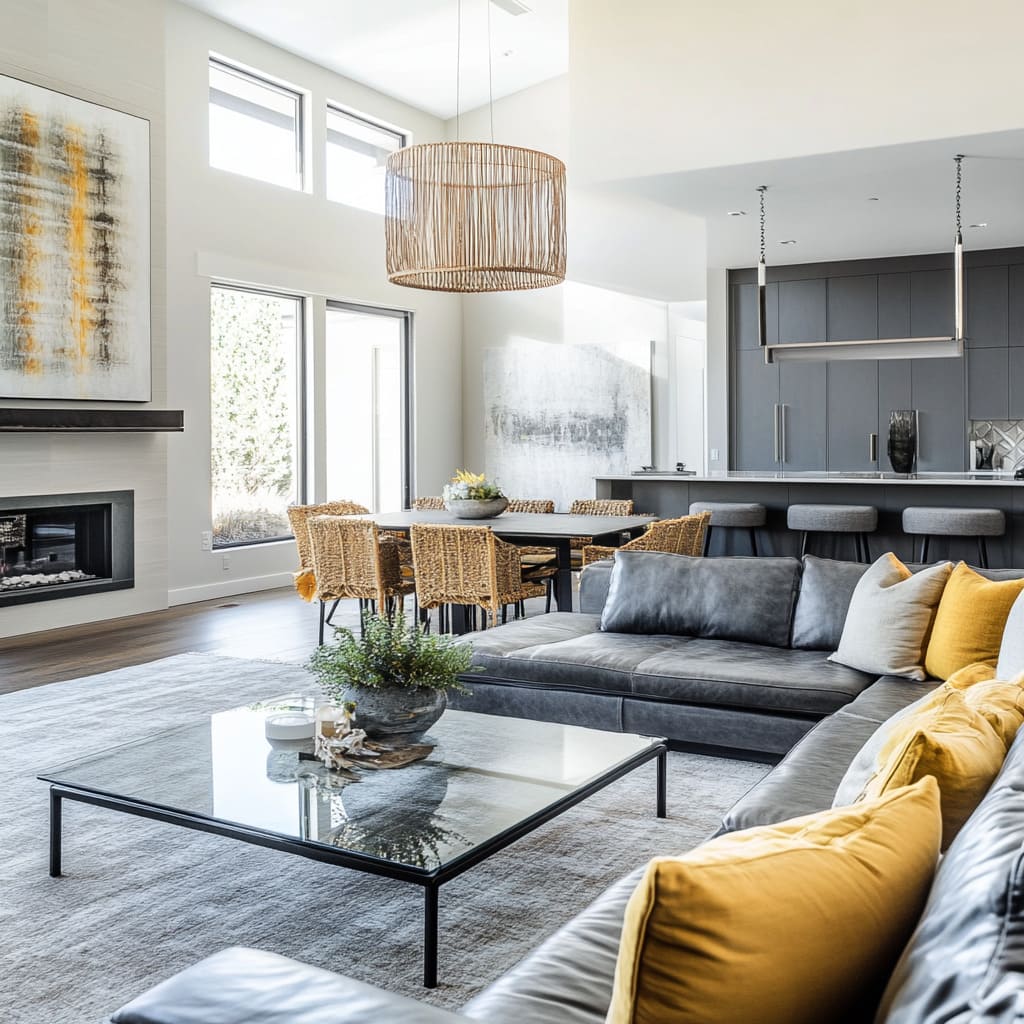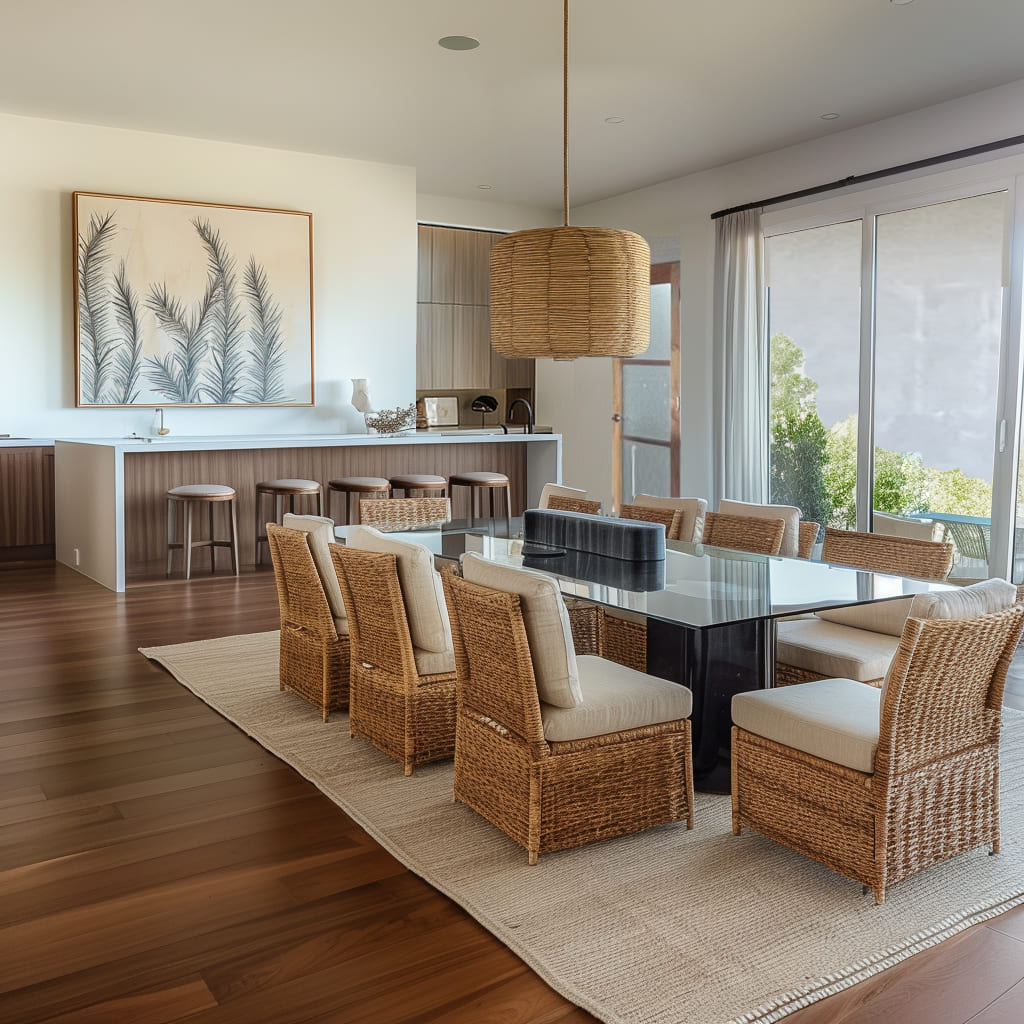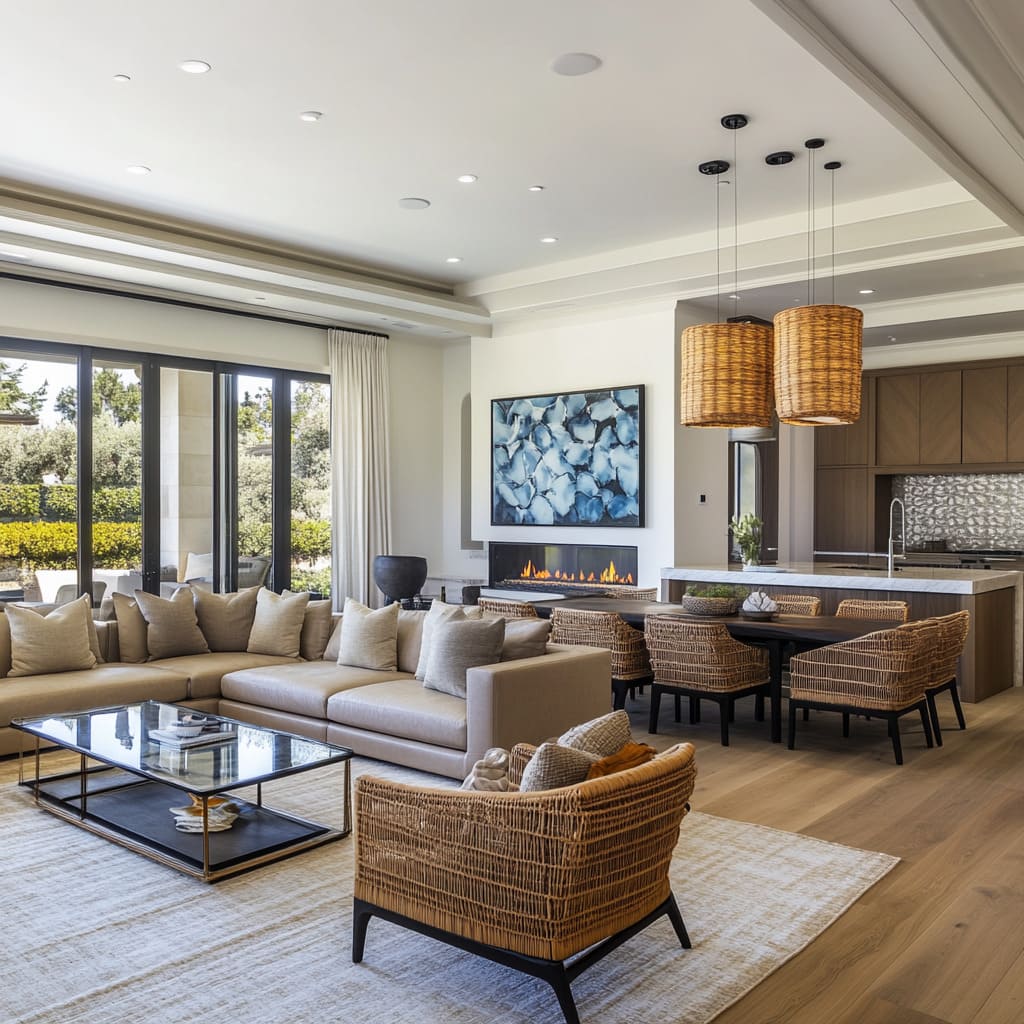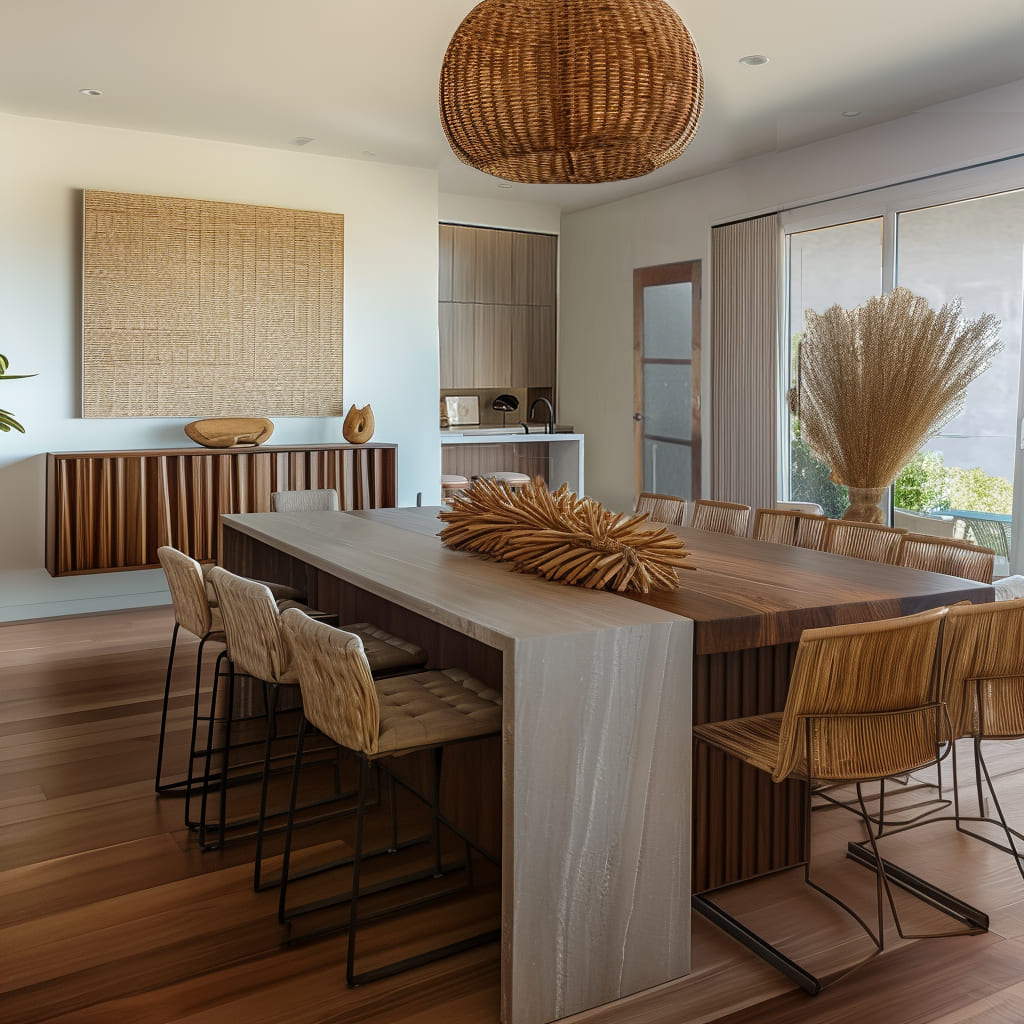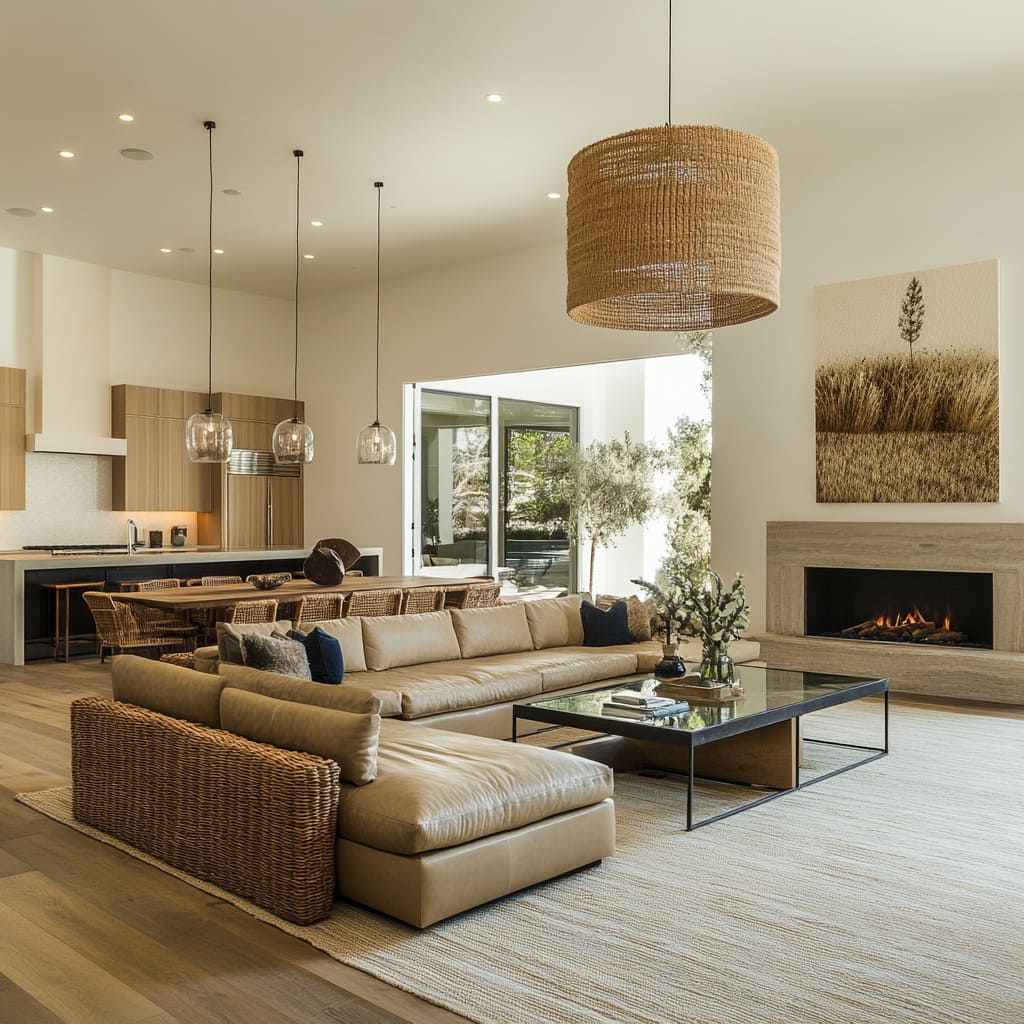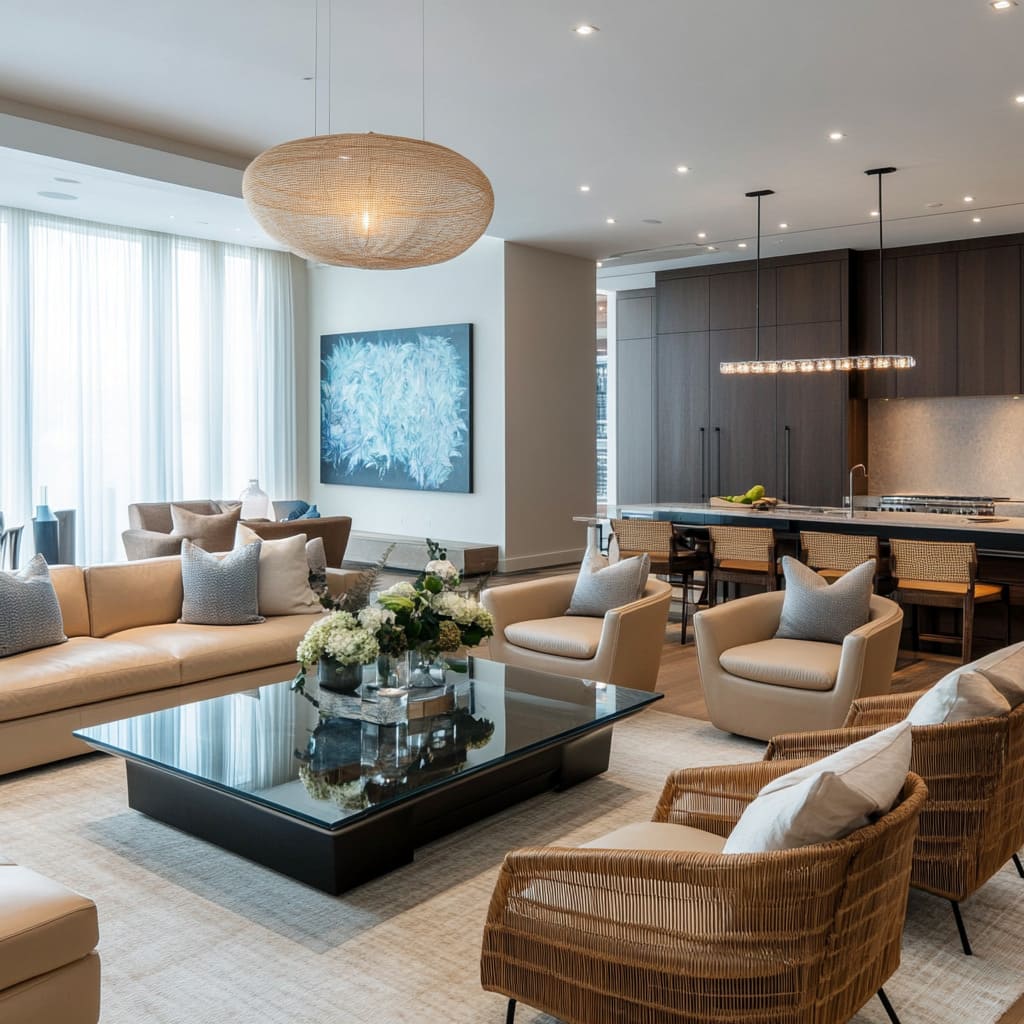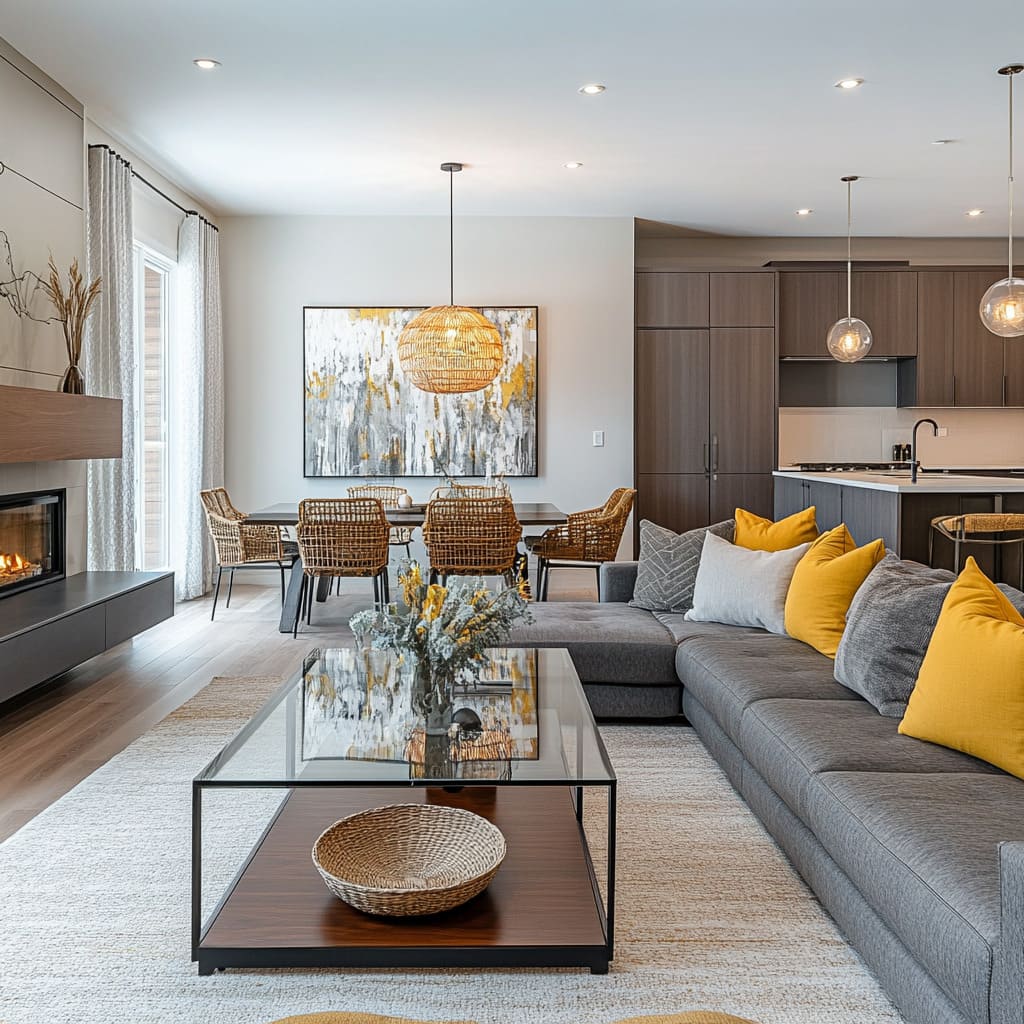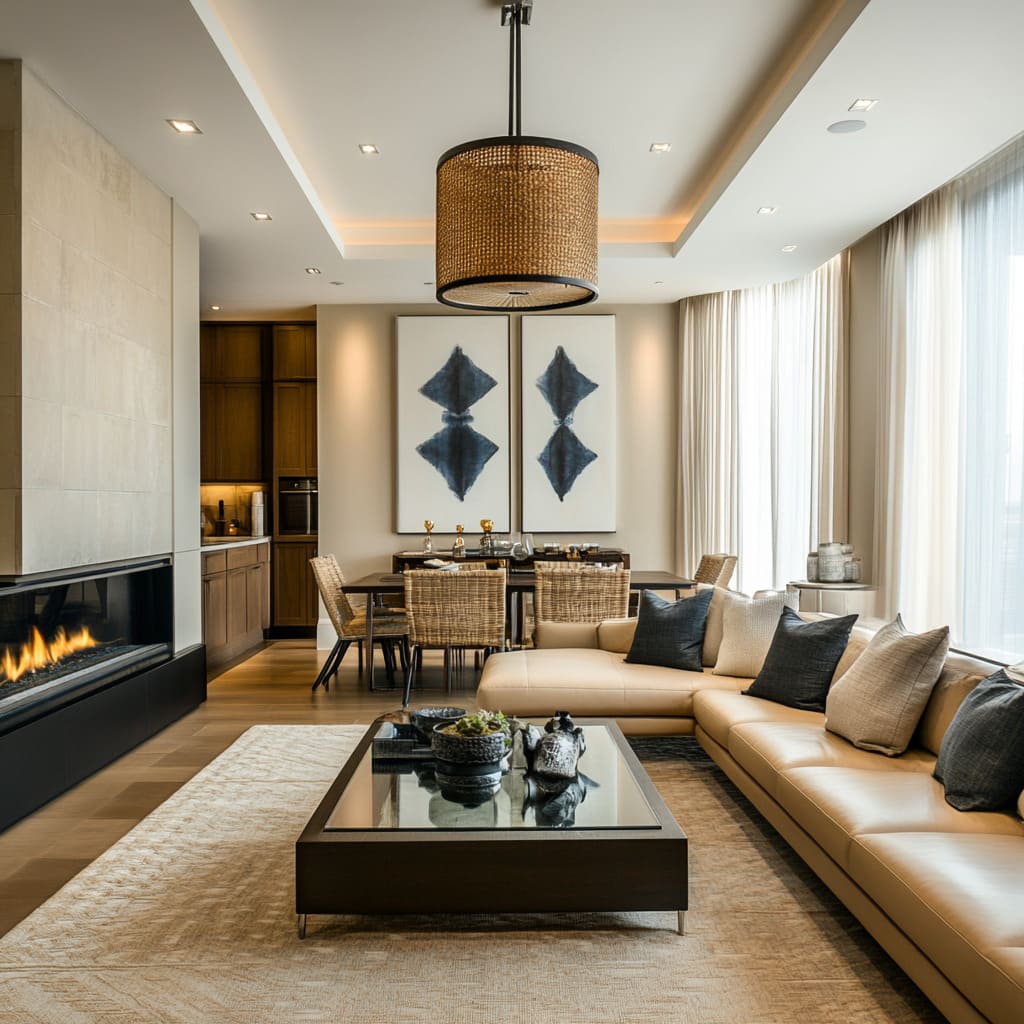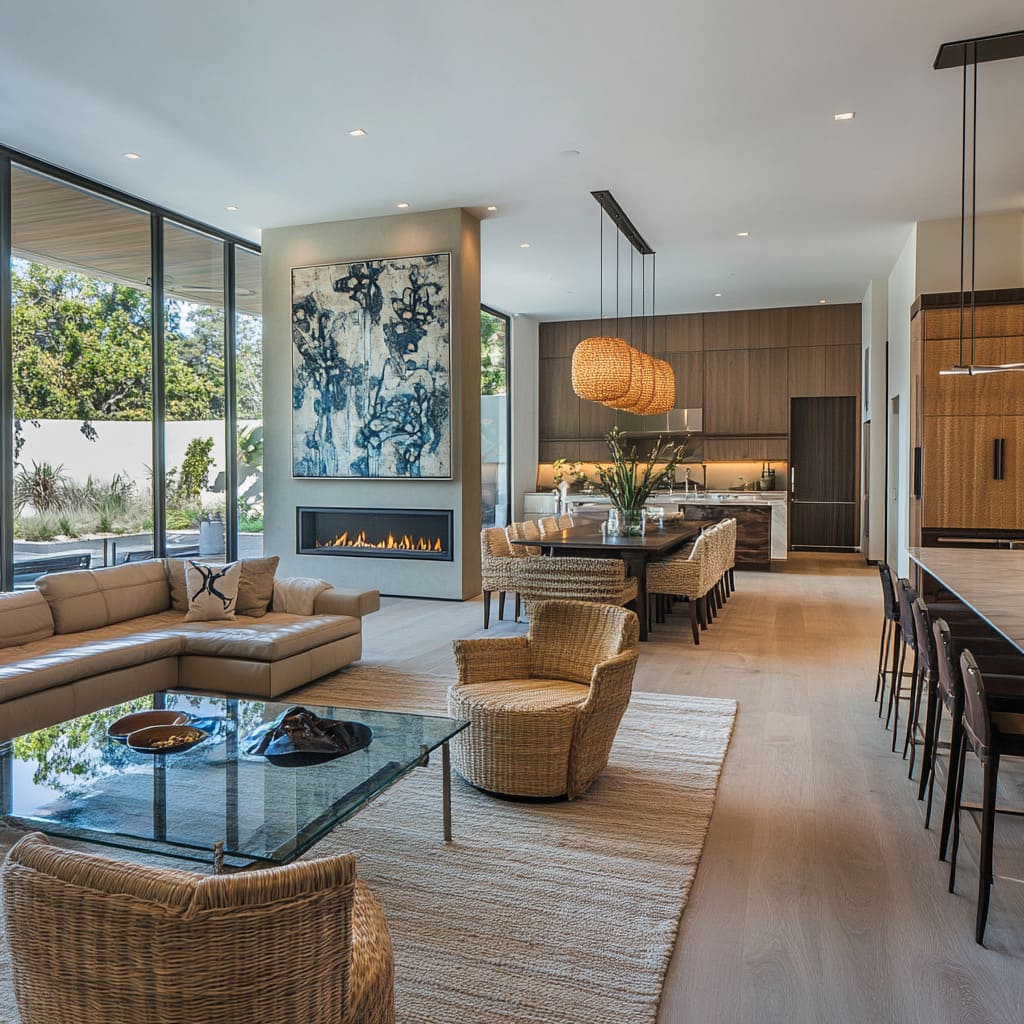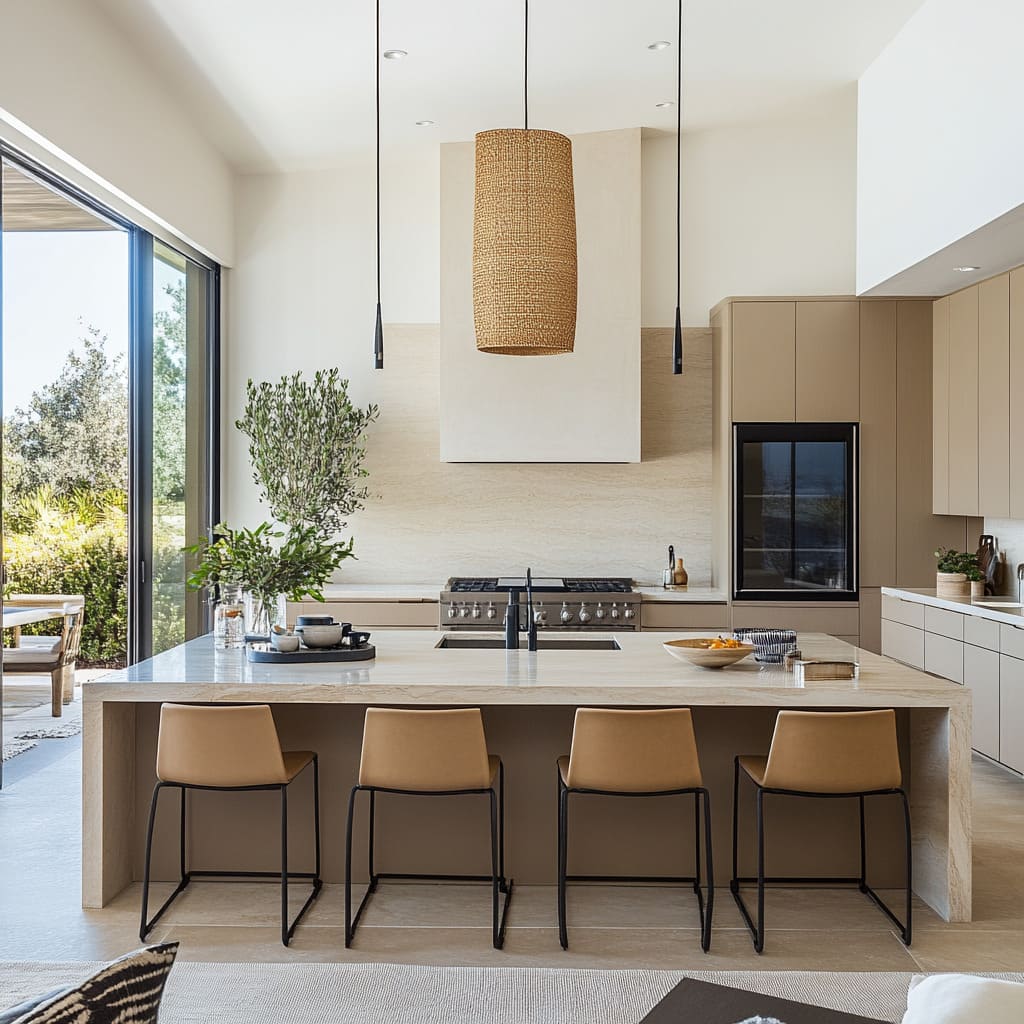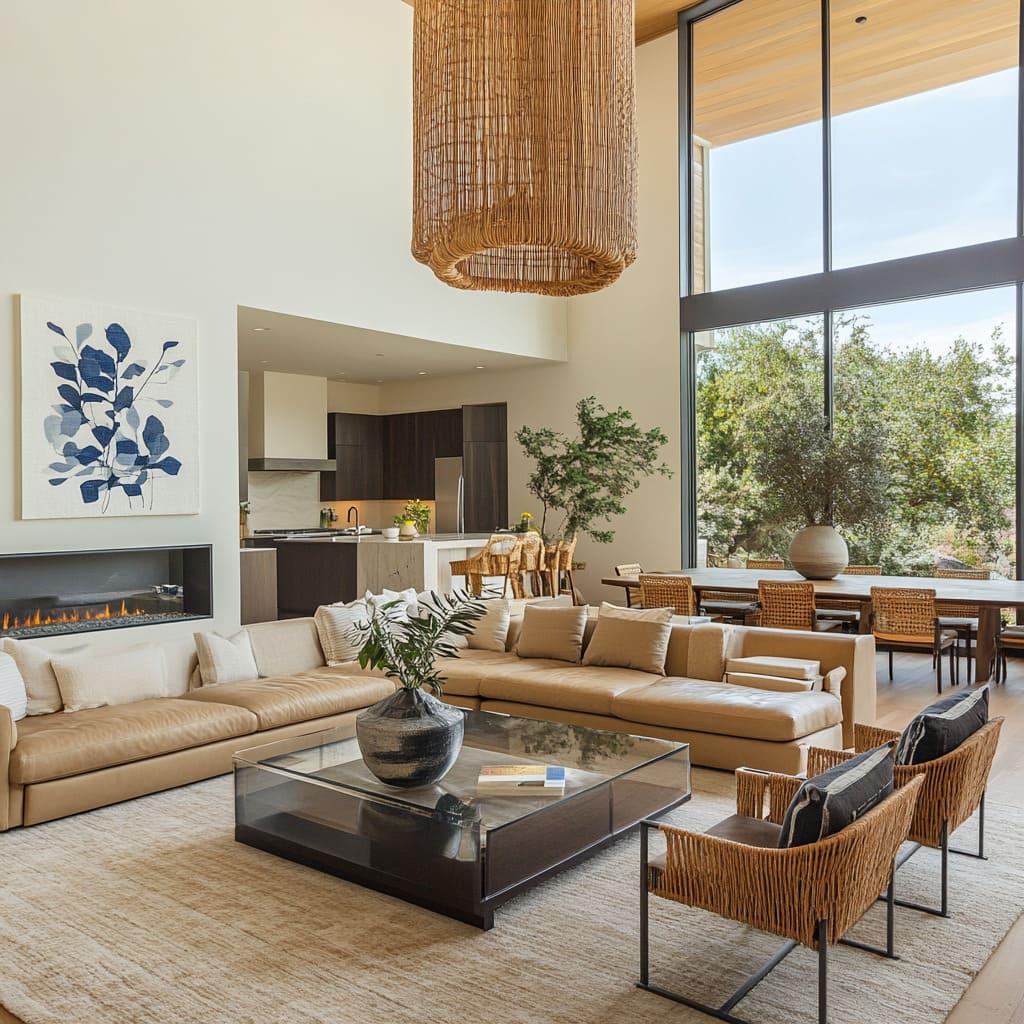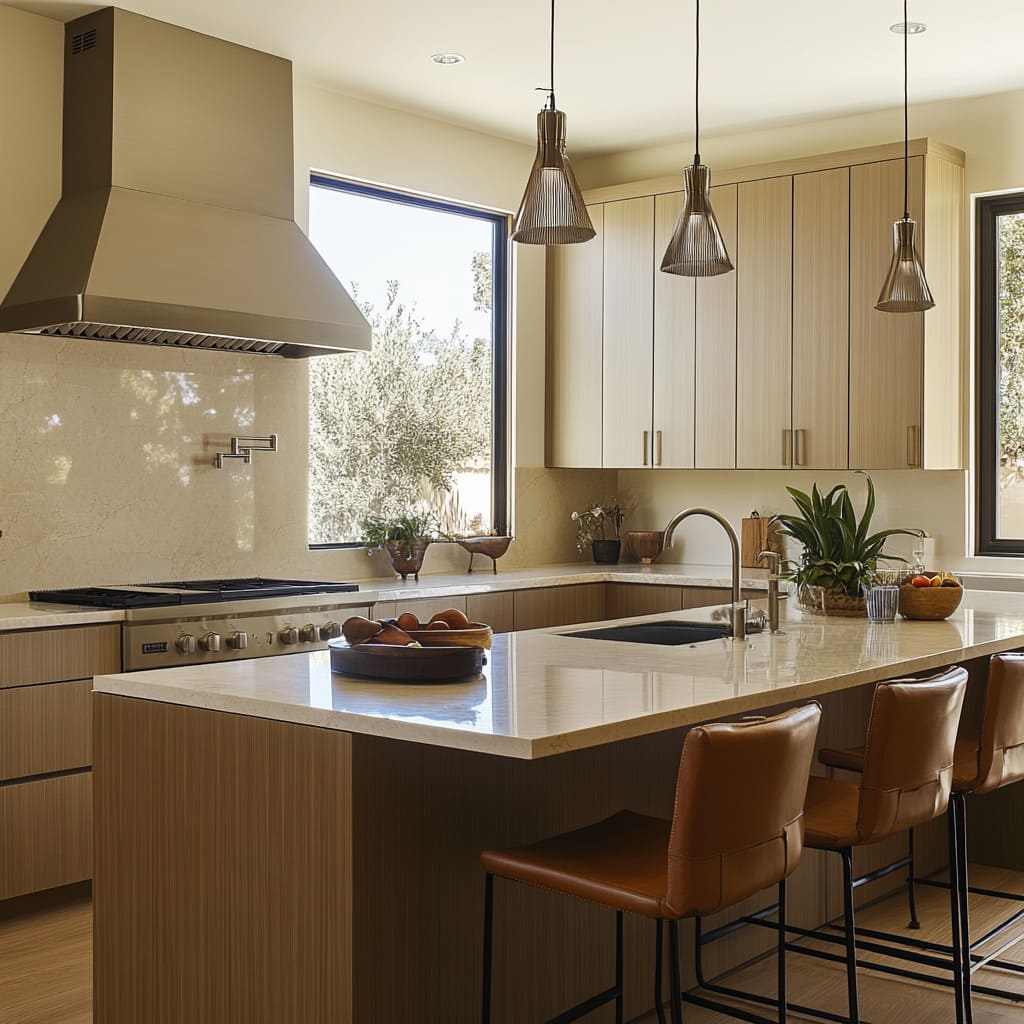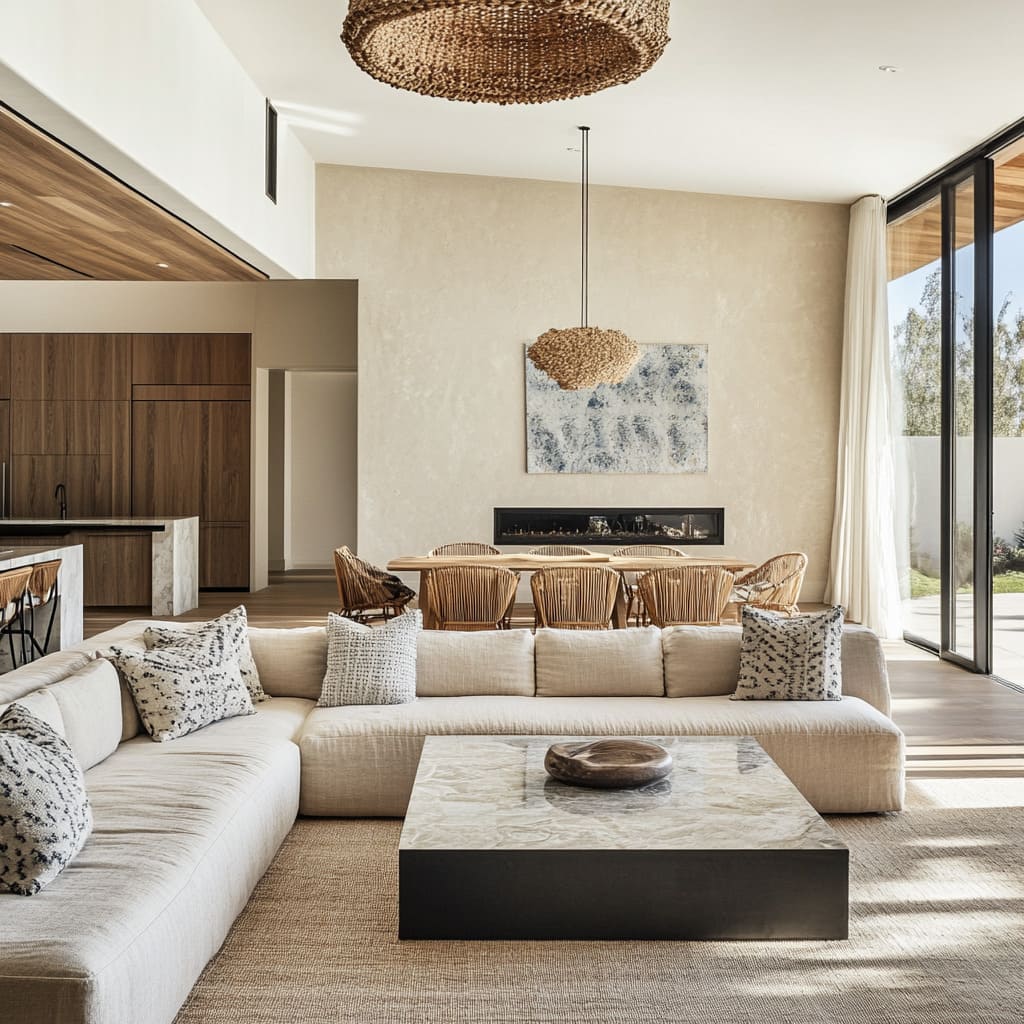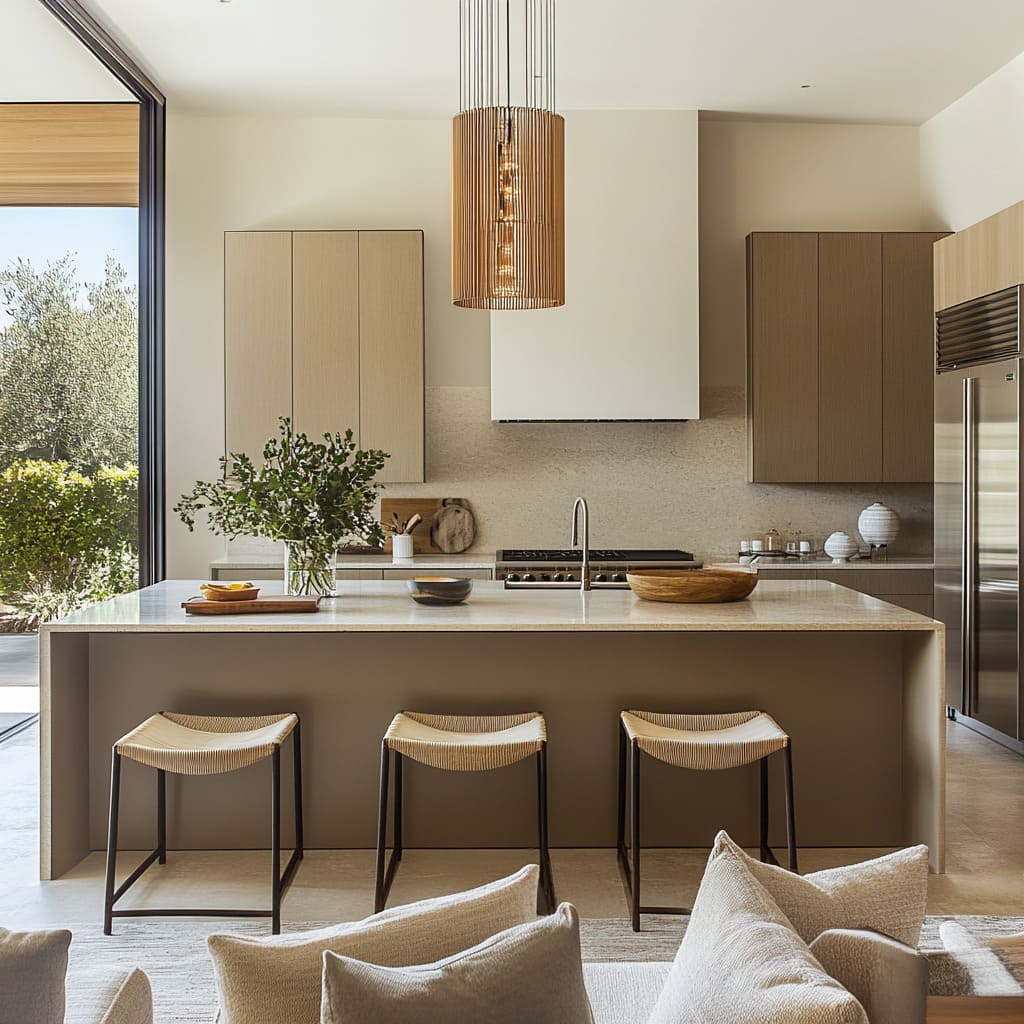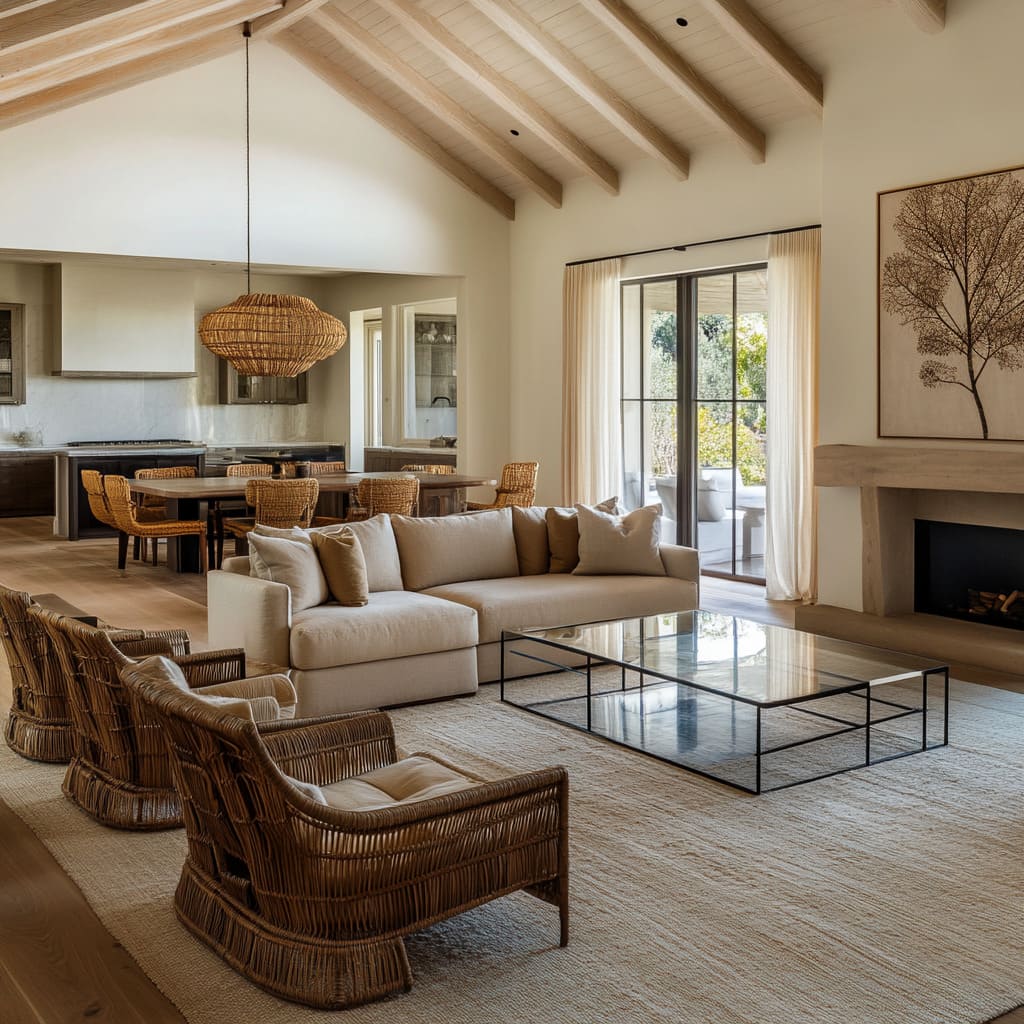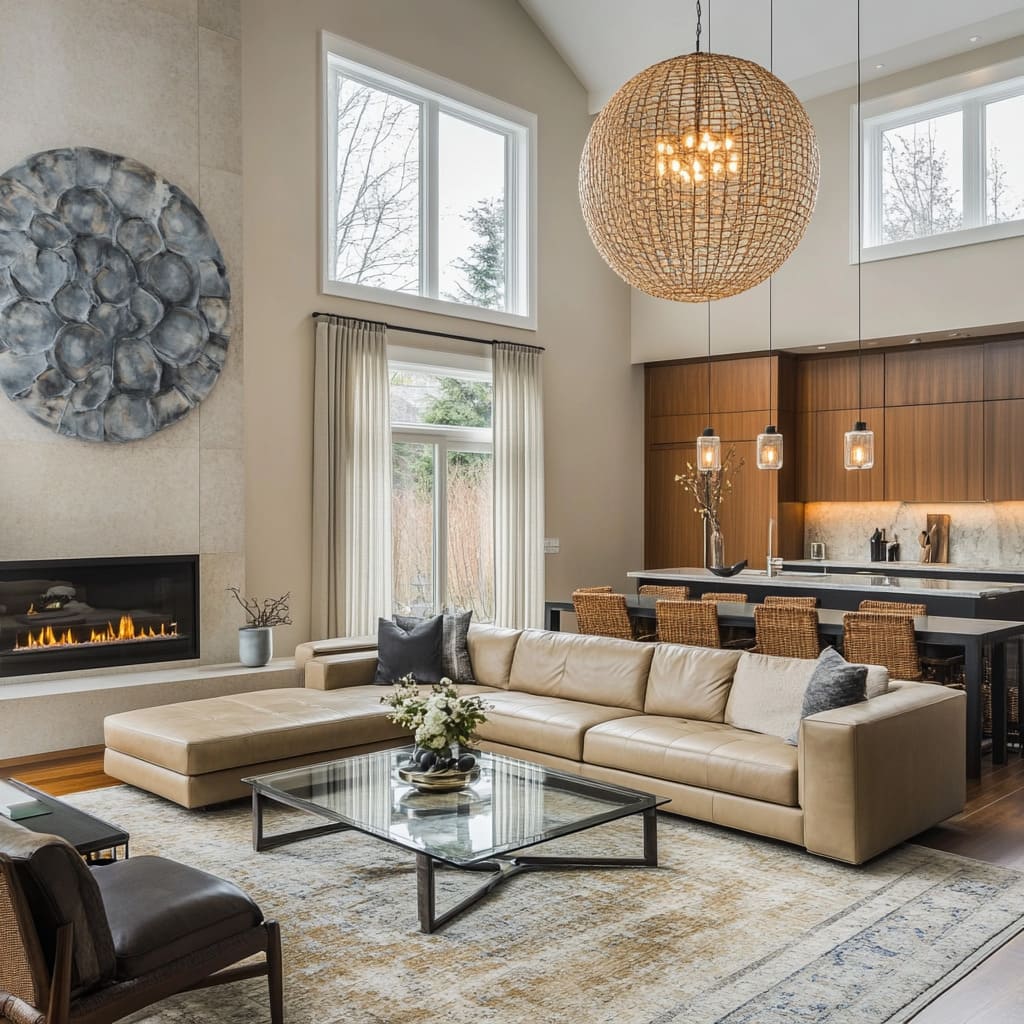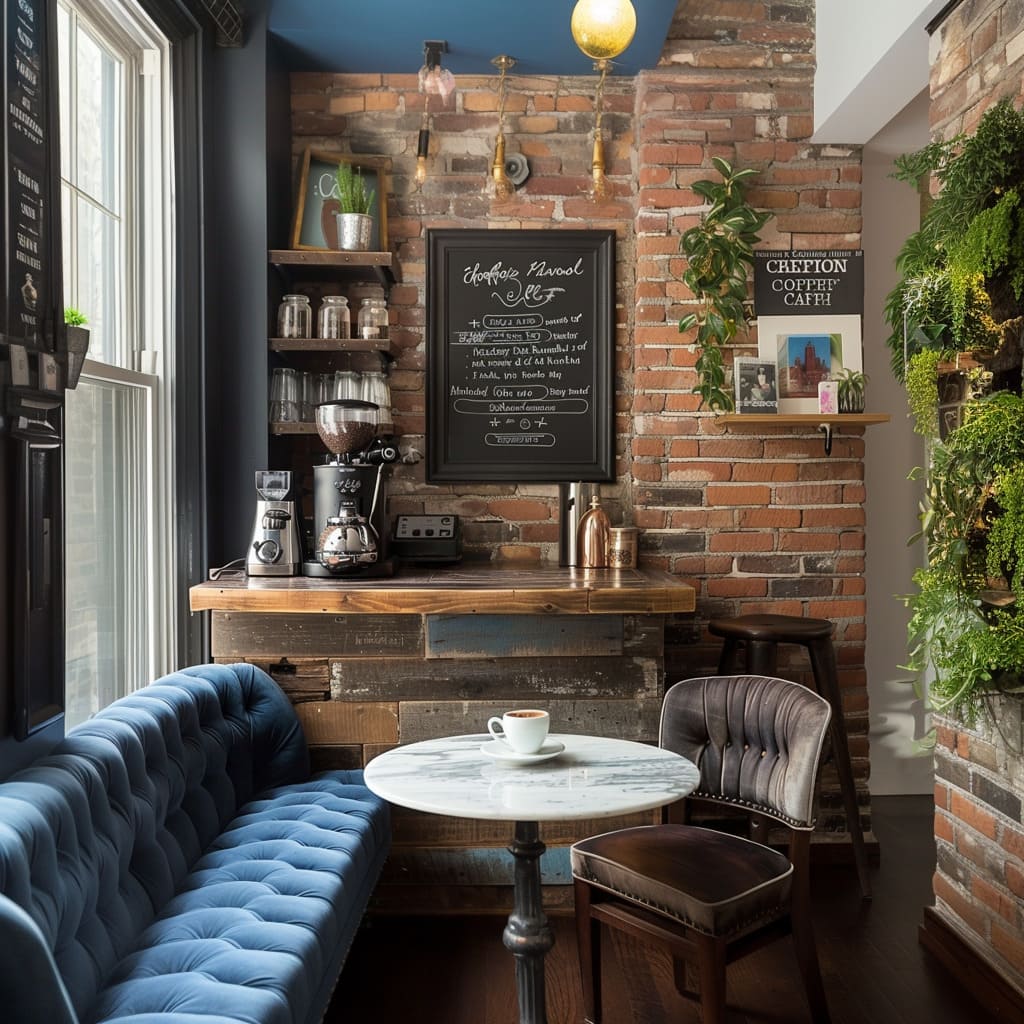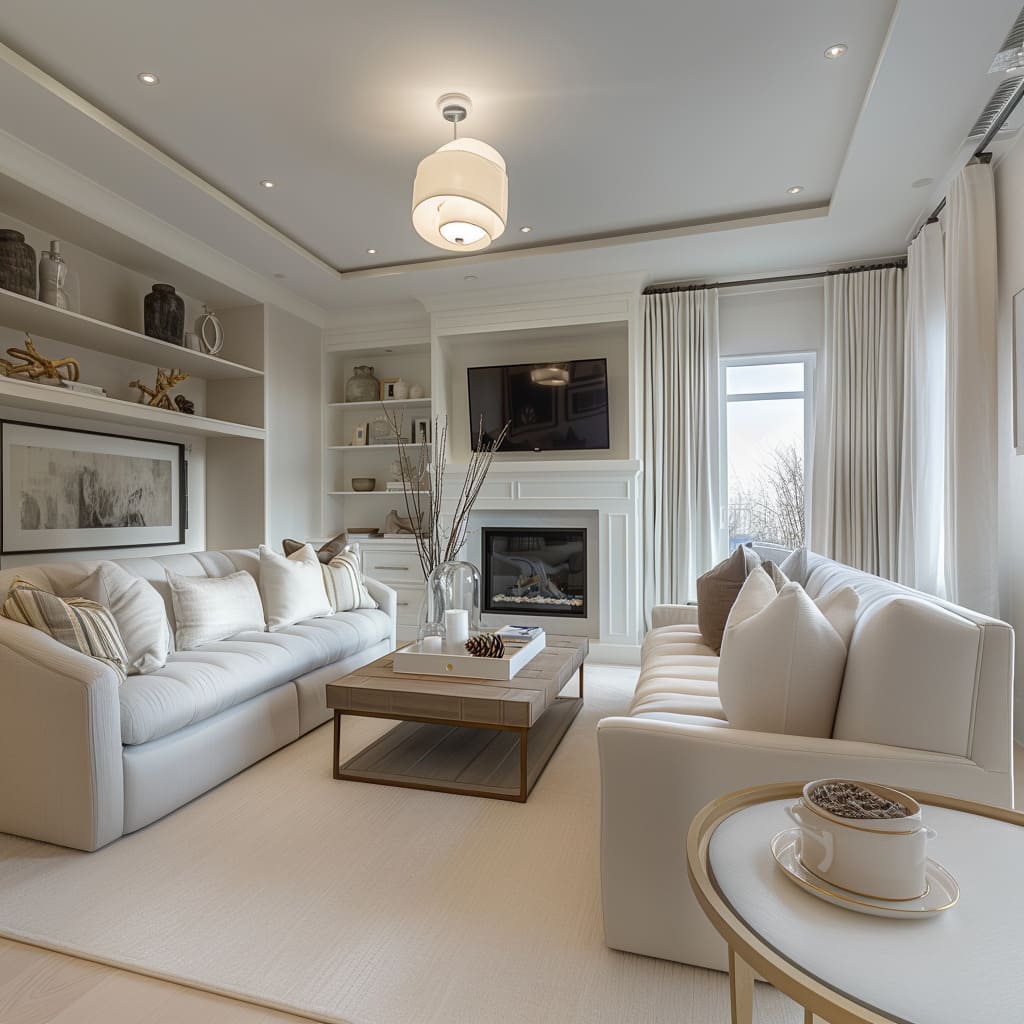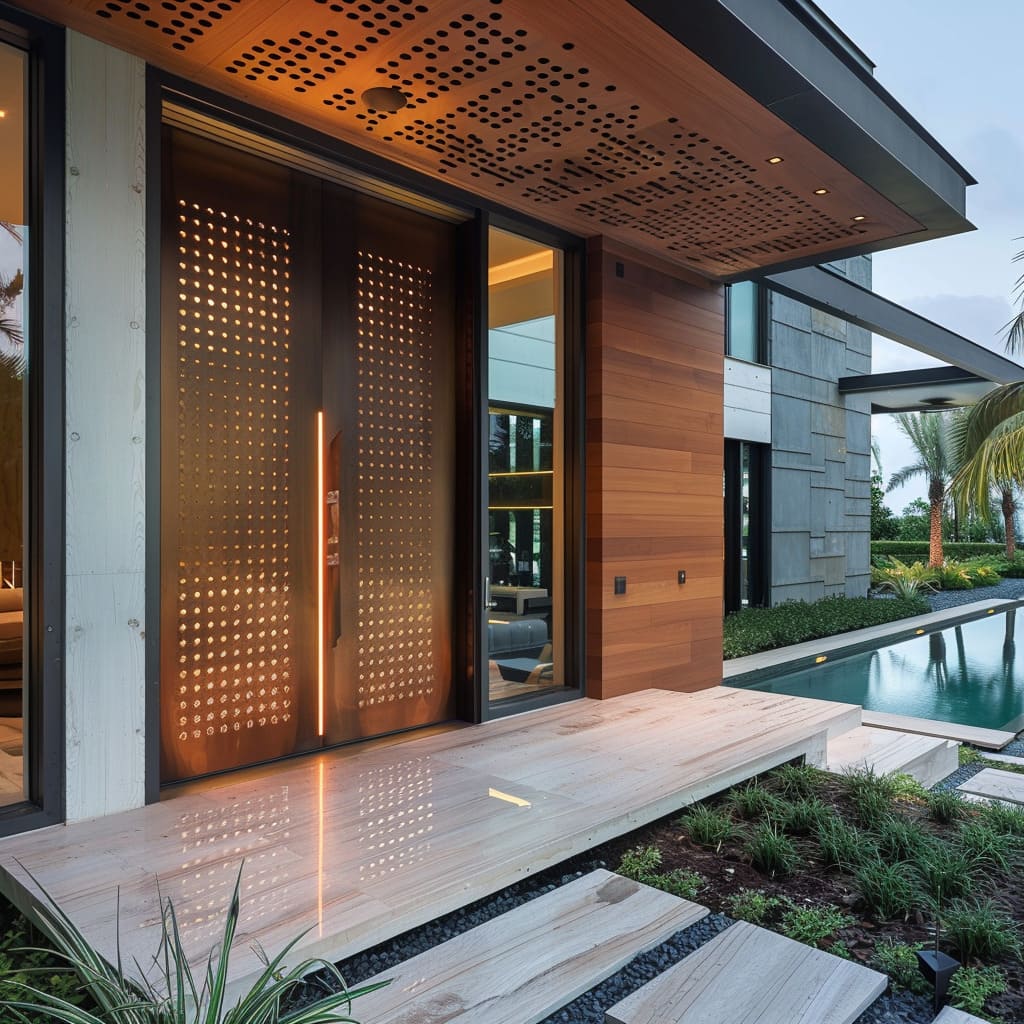Modern minimalism in interior design is characterized by simplicity, clean lines, and a focus on functionality. This approach values a -less is more- philosophy, where each element in the space is carefully chosen for its purpose and aesthetic appeal.
However, minimalism can sometimes be associated with a cold or sterile atmosphere, lacking the warmth and comfort that make a home feel inviting. This article explores the various strategies for integrating warmth into a minimalist design, creating a space that is both visually appealing and cozy.
By focusing on key elements such as natural light, texture, materials, lighting, and thoughtful decor, we will discuss how to achieve a balanced environment that embraces both minimalism and comfort
Understanding the Foundations of Modern Minimalism
At its core, modern minimalism revolves around the idea of simplicity and functionality. It strips away excess and focuses on the essentials, ensuring that every item in the space has a purpose.
This approach results in clean, uncluttered spaces where the architecture and design elements are allowed to shine without distraction. A significant aspect of minimalism is the use of neutral color palettes.
These typically include shades of white, gray, beige, and sometimes black. These colors create a calming backdrop that emphasizes the simplicity of the design.
However, the challenge lies in avoiding a space that feels too clinical or lifeless. Integrating warmth into a minimalist design requires careful consideration of color accents and materials to bring life and comfort to the space without disrupting the overall aesthetic.
Neutral tones are the foundation, but they can be complemented with subtle pops of color. For instance, adding a few mustard yellow or burnt orange accents can introduce warmth while still maintaining the minimalist integrity of the design.
These colors should be used sparingly and strategically to ensure they enhance rather than overpower the space. The overall goal is to create a balanced environment where simplicity meets warmth, and where every design choice contributes to the cohesive vision.
The Role of Natural Light in Creating Warmth
Natural light plays a crucial role in enhancing the warmth of a minimalist space. Large windows and open spaces are key features in modern minimalist design, allowing sunlight to flood the room and create a bright, inviting atmosphere.
The presence of natural light not only makes a space feel more open and airy but also adds a sense of warmth that artificial lighting alone cannot achieve. Maximizing natural light involves thoughtful architectural design as well as interior layout.
Positioning furniture in a way that allows light to flow freely throughout the space is essential. For rooms with limited natural light, reflective surfaces such as mirrors, glass, or even light-colored walls can help bounce light around the room, amplifying the effect and brightening the space.
Window treatments in a minimalist space should be understated and functional. Sheer curtains, simple blinds, or even no window coverings can be effective in maintaining the flow of light while adding a touch of softness.
The choice of window treatments should complement the overall design, ensuring they do not obstruct the light or complicate the clean lines that are characteristic of minimalism. Natural light is not just about brightness; it’s about creating a sense of warmth and connection to the outside world.
In a minimalist home, this connection is vital in preventing the space from feeling too isolated or artificial. By carefully considering how light interacts with the space, you can create an environment that feels both open and cozy, where natural light is used to its fullest potential
Adding Texture to Enhance Warmth
Texture is an often overlooked but incredibly important element in interior design, especially in minimalist spaces. When color choices are kept simple and the overall design is pared down, texture becomes a crucial tool for adding depth and warmth to the space.
By layering different textures, you can create a visually engaging environment that feels rich and inviting, even within the confines of minimalism. Incorporating different textures can start with larger elements such as rugs, furniture, and wall coverings.
A thick, woven rug in a neutral tone can anchor a seating area and add a cozy, tactile element underfoot. Leather sofas, while sleek and modern, can be softened with the addition of plush pillows and chunky knit throws.
These items not only provide physical comfort but also introduce a variety of textures that add to the warmth of the room. Balancing smooth and rough textures is key to creating a harmonious space.
For example, pairing a glass coffee table with a nubby wool rug creates a contrast that is visually interesting and adds depth to the room. Similarly, incorporating natural wood elements can introduce warmth and a sense of grounding, while metallic finishes can add a touch of sleek sophistication.
The goal is to create a layered look that feels cohesive and inviting, where each texture plays a role in enhancing the overall warmth of the space. Small decor items such as woven baskets, ceramic vases, and linen cushions can also contribute to the texture in a room.
These elements add layers of interest without cluttering the space, staying true to the minimalist ethos while ensuring the room feels comfortable and lived-in. By thoughtfully layering textures, you can transform a minimalist space from stark and cold to warm and welcoming.
Incorporating Natural Materials
Natural materials are essential in bringing warmth into a minimalist design. These materials have an inherent warmth and organic quality that contrasts beautifully with the clean lines and simplicity of minimalism.
Incorporating elements like wood, stone, and natural fibers can help create a balanced space that feels both modern and inviting. Wood is a versatile material that works well in minimalist spaces.
Whether used for flooring, furniture, or decorative accents, wood adds warmth and a sense of grounding. Light-colored woods, such as oak or maple, can keep a space feeling bright and open, while darker woods like walnut or mahogany can add a touch of richness and depth.
The grain and texture of the wood provide a subtle pattern that adds visual interest without overwhelming the space. Stone is another material that can be used to introduce warmth and texture.
A stone fireplace, for example, can become a focal point that draws the eye and adds a natural, earthy element to the room. Similarly, stone countertops or backsplashes in the kitchen can add a sense of durability and timelessness.
The key is to choose stones with warm undertones, such as beige or soft gray, to ensure they contribute to the overall warmth of the space. Natural fibers like wool, cotton, and linen can be incorporated through textiles and soft furnishings.
These materials add softness and comfort, making the space feel more welcoming. Woven baskets, rattan furniture, and jute rugs are excellent ways to bring in natural textures that complement the minimalist aesthetic.
These materials also add a tactile quality that enhances the sensory experience of the room, making it not just visually pleasing but also inviting to touch and feel. The integration of natural materials is about creating a connection to nature within the home.
These elements bring a sense of calm and warmth, making the space feel grounded and connected to the natural world. By combining these materials thoughtfully, you can achieve a minimalist design that is not only stylish but also warm and inviting
The Power of Soft Furnishings
Soft furnishings play a crucial role in transforming a minimalist space from stark to cozy. These elements provide the comfort and warmth that are often missing in purely minimalist designs.
By carefully selecting and arranging soft furnishings, you can add layers of comfort and create a space that feels inviting and lived-in. Comfortable seating is the foundation of any living space.
In a minimalist room, the choice of seating should be both functional and aesthetically pleasing. A well-cushioned sofa with a sleek design can offer the perfect blend of comfort and style.
The key is to choose a sofa that fits the minimalist aesthetic but does not sacrifice comfort. Upholstery in natural fabrics like linen or cotton can add a soft texture that contrasts with the clean lines of the furniture.
Throw pillows and blankets are essential accessories that add warmth and texture. These items can be used to introduce subtle pops of color or pattern, breaking up the monotony of a monochromatic scheme.
A collection of throw pillows in varying textures, such as velvet, wool, and cotton, can add depth and interest to the seating area. Similarly, a chunky knit throw draped over the sofa adds a tactile element that invites relaxation.
Area rugs are another important soft furnishing that can define a space and add warmth. In a minimalist room, a large area rug with a subtle pattern or texture can anchor the seating area and provide a soft surface underfoot.
The choice of rug should complement the overall color scheme and texture palette, ensuring it enhances the warmth of the space without overpowering the minimalist design. Curtains and drapes can also contribute to the warmth of a room.
While minimalist design often favors bare windows to maximize natural light, sheer curtains or simple linen drapes can soften the edges of the room and add a touch of elegance. These elements provide privacy while still allowing light to filter through, maintaining the airy feel of the space.
By thoughtfully incorporating soft furnishings, you can add layers of comfort and warmth to a minimalist space. These elements make the room feel more inviting and lived-in, creating a balance between the clean lines of minimalism and the coziness of a well-loved home
Strategic Use of Lighting
Lighting is a crucial element in any interior design, but it takes on particular importance in a minimalist space. The right lighting can enhance the warmth and comfort of a room, creating a welcoming atmosphere that complements the clean lines and simplicity of the design.
In a minimalist space, lighting should be both functional and decorative, serving to highlight key features while also contributing to the overall ambiance. Layering lighting is an effective strategy for creating a balanced and well-lit space.
This involves combining different types of lighting—ambient, task, and accent—to achieve the desired effect. Ambient lighting provides general illumination, ensuring the space is well-lit and functional.
This can be achieved through recessed ceiling lights or a central pendant light that offers even, diffused light. Task lighting is focused and functional, providing illumination for specific activities such as reading or cooking.
In a minimalist space, task lighting should be sleek and unobtrusive, blending seamlessly with the overall design. Pendant lights over a kitchen island or a floor lamp beside a reading chair can provide the necessary light without disrupting the clean lines of the room.
Accent lighting is used to highlight specific features or create mood lighting. In a minimalist space, this might include wall sconces that add a warm glow to the room or under-cabinet lighting in the kitchen that highlights the countertops.
The key is to use accent lighting sparingly and strategically, ensuring it enhances the overall design without adding unnecessary clutter. Choosing the right light temperature is also important in creating warmth.
Warm white light (around 2700K to 3000K) is ideal for living spaces as it creates a cozy and inviting atmosphere. Cooler white light can feel harsh and clinical, which is why it’s often reserved for workspaces or areas where bright, focused light is needed.
Lighting fixtures themselves can also be a design statement in a minimalist space. Sleek, modern fixtures in materials like metal, glass, or wood can complement the overall aesthetic while adding a touch of elegance.
Whether it’s a statement pendant light over the dining table or a minimalist floor lamp in the living room, the choice of lighting fixture can significantly impact the mood and style of the space. By carefully considering the type, placement, and design of lighting, you can enhance the warmth and comfort of a minimalist space.
The right lighting can transform a room from stark and cold to warm and welcoming, creating an environment that is both functional and aesthetically pleasing
Art and Decor as Expressions of Warmth
In a minimalist space, art and decor play a vital role in adding personality and warmth. These elements can bring color, texture, and interest to a room without overwhelming the simplicity of the design.
The key is to choose pieces that resonate with the overall aesthetic while introducing warmth and character. Statement art can be a powerful addition to a minimalist space.
A large, bold piece of artwork can serve as a focal point, drawing the eye and adding a touch of color or pattern to the room. Abstract pieces in warm tones, such as yellows, oranges, or earthy browns, can complement the neutral palette of the space while adding a sense of depth and richness.
The placement of art is also important; a well-chosen piece can balance the proportions of a room and create a sense of harmony. Decorative items should be selected with care in a minimalist space.
The goal is to add interest and warmth without cluttering the room. Items such as vases, sculptures, or ceramics in natural materials can add a tactile quality that enhances the overall warmth of the space.
These pieces should be placed strategically, ensuring they contribute to the design without overwhelming it. The use of natural elements in decor can also bring a sense of warmth and life to a minimalist space.
Indoor plants, for example, add a touch of greenery that contrasts beautifully with the clean lines and neutral tones of the room. The organic shapes and textures of plants can soften the space and create a more inviting atmosphere.
Whether it’s a large potted plant in the corner of the room or a small succulent on the coffee table, plants can add a refreshing and natural element to the design
Books and personal items can also add warmth and character to a minimalist space. A carefully curated selection of books on a shelf or coffee table can introduce color and interest, while also reflecting the personality of the homeowner.
Personal items, such as family photos or travel souvenirs, can be displayed in a way that adds warmth without disrupting the minimalist aesthetic. By thoughtfully incorporating art and decor, you can add layers of warmth and personality to a minimalist space.
These elements bring life and character to the room, creating a space that feels both stylish and welcoming
Integrating Functional Elements with Aesthetic Appeal
In minimalist design, the integration of functionality and aesthetic appeal is essential. The goal is to create a space that is both beautiful and practical, where every element serves a purpose without sacrificing style.
This balance is particularly important in areas such as the kitchen, where functionality is key but the design should still reflect the overall aesthetic of the home. Furniture selection is a crucial aspect of achieving this balance.
In a minimalist space, furniture should be chosen for its clean lines and functional design, but it should also offer comfort and warmth. For example, a kitchen island with bar seating can serve as both a functional workspace and a social hub.
The choice of materials, such as a sleek stone countertop paired with warm wood stools, can enhance the aesthetic while ensuring the space remains practical for everyday use
Creating zones within an open-concept space is another way to integrate functionality and design. By using furniture and rugs to define different areas, such as a dining space or a seating area, you can create distinct zones that serve specific functions while still maintaining a cohesive overall design.
The key is to ensure that each zone feels connected to the others, using a consistent color palette and materials to tie the spaces together
Storage solutions should also be carefully considered in a minimalist space. Clutter can quickly disrupt the clean lines and simplicity of the design, so it’s important to incorporate smart storage options that keep items out of sight while still being easily accessible.
Built-in cabinets, hidden storage, and multifunctional furniture can all contribute to a well-organized and functional space that maintains its minimalist aesthetic
The integration of functional elements with aesthetic appeal is about creating a space that works for everyday living while still reflecting the beauty of minimalist design. By choosing furniture, storage, and layout with intention, you can create a space that is both practical and visually pleasing, where form and function coexist in harmony
Case Studies and Real-Life Examples
Examining real-life examples of successful minimalist spaces that incorporate warmth and comfort can provide valuable insights and inspiration. These case studies highlight the various strategies discussed in this article, showing how they can be applied in different contexts to achieve a balanced and inviting minimalist design
One example might be a modern living room that uses a neutral color palette and natural materials to create a warm and cozy atmosphere. The room features a large, comfortable sofa with soft linen upholstery, complemented by a woven area rug and a selection of textured throw pillows.
Large windows allow natural light to flood the space, while sheer curtains add a touch of softness. A statement piece of artwork in warm tones adds color and interest, while a few carefully chosen decorative items bring personality to the room
Another example could be a minimalist kitchen that balances functionality with aesthetic appeal. The kitchen features sleek, modern cabinetry in a warm wood finish, paired with a stone countertop and stainless steel appliances.
A large island provides ample workspace, while also serving as a social hub with bar seating. Pendant lights above the island add both task lighting and a decorative element, while natural light from large windows enhances the warmth of the space.
The integration of smart storage solutions ensures that the kitchen remains uncluttered and functional, while still maintaining its minimalist design. By analyzing these and other real-life examples, readers can gain a deeper understanding of how to apply the principles of modern minimalism in their own spaces.
These case studies provide practical insights and inspiration, showing how warmth and comfort can be successfully integrated into minimalist design
Conclusion
Integrating warmth and comfort into modern minimalist design is about creating a balance between simplicity and coziness. By carefully considering elements such as natural light, texture, materials, lighting, and decor, you can create a space that is both visually appealing and inviting.
The strategies discussed in this article provide a roadmap for achieving this balance, showing that minimalism does not have to be cold or sterile. Instead, it can be warm, comfortable, and deeply connected to the idea of home.
By applying these principles, you can create a minimalist space that is not only beautiful but also a true reflection of comfort and warmth.

